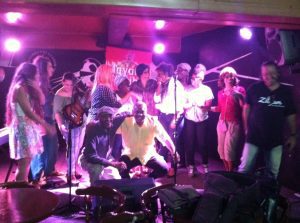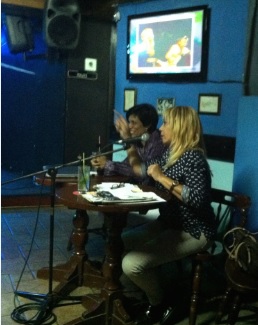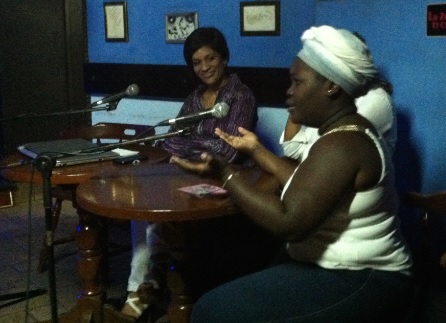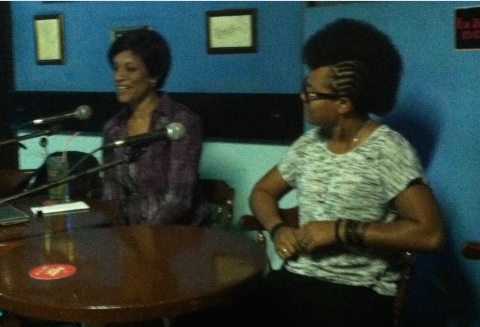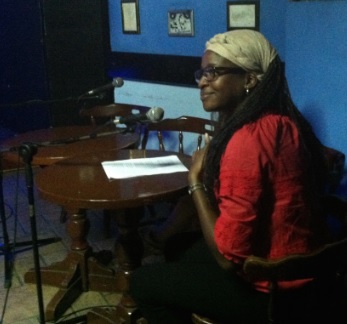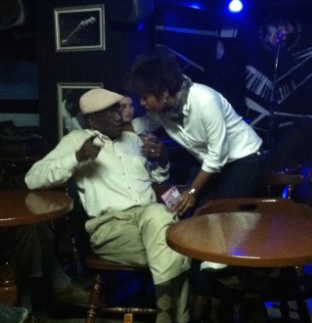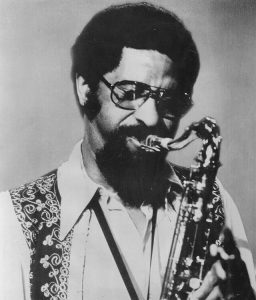Afro-Cuban culture, Blog, Cuba, The Cuba-US connection, Travel to Cuba
David Amram, Pete Seeger and Dizzy Gillespie
Interview
Download the mp3 here
“Decían que yo no venía y aquí usted me ve” (They said I wasn’t coming and here you see me!)
– Benny More
In 1977, David Amram visited Cuba for his first and only time with Dizzy Gillepsie, Stan Getz, and Earl “Fatha” Hines.
Now 40+ years later, this lifelong student of the music is returning to Havana where he’ll be featured at the Havana jazz Fest.
Jazz on the Tube helped make this possible. Thanks to all the supporters who help make Jazz on the Tube possible.
– Ken McCarthy
Jazz on the Tube
Go to Cuba with Jazz on the Tube as your guide:
Click here for details
Afro-Cuban culture, Blog, Cuba, Cuban Jazz, The Cuba-US connection, Travel to Cuba, Video and audio
The album that resulted from Amram’s
last trip to Cuba over 40 years ago
Interview
Download the mp3 here
40 years later David Amram returns to Cuba….
In 1977, the Carter administration gave permission to a group of US jazz musicians to travel to Cuba the first such trip in the fifteen years after the Revolution there.
Dizzy Gillespie, Stan Getz, Earl “Fatha” Hines, Ray Mantilla, and David Amram landed in Havana for a 36-hour musical whirlwind.
Now, forty plus years later, Amram is making a long-awaited return trip, this time for a week to perform at the Havana Jazz Festival – an invitation facilitated by Jazz on the Tube.
– Ken McCarthy
Jazz on the Tube
Blog, Cuba, Travel to Cuba
How to get there? Is it expensive?
It’s easy to get to Cuba. Just get on a plane. There are scheduled flights everyday out of places like New York City and Miami.
Is travel in Cuba expensive?
Yes and no.
If you go with a packaged tour or use the “normal” travel industry, yes. Cuba is no bargain. Budget at least $400 a day (probably more) plus your airfare.
You could have an exponentially better time – better housing, better food, better entertainment – for about $100 a day.
How do you do that?
You have to go to an informed person.
How do you do that?
Easy.
– Ken McCarthy
Jazz on the Tube
P.S. Our unique programming is made possible by help from people like you. Learn how you can contribute to our efforts here: Support Jazz on the Tube
Thanks.
Afro-Cuban culture, Blog, Cuba, The Cuba-US connection, Travel to Cuba

Good news and bad news about the new travel policy for Cuba. (As of November 10, 2017)
I’m going to quote the Washington Post on the changes. As is often the case, you have to read the fine print to know what the real deal is.
Make sure you read the second paragraph carefully.
The most significant change under the new regulations is the elimination of the individual “people-to-people” category of educational travel. As before the Obama opening, most visitors to Cuba will again have to travel in licensed groups.
One remaining exception appears to be the “support for the Cuban people” category, which requires travelers to “engage in a full-time schedule” of unspecified “meaningful interaction with individuals in Cuba” and activities that support civil society.
I don’t like the weasel word “appears” in the phrase “one remaining exception appears to be…”
However, if this is the case, then citizens of the “Land of the Free” can still freely travel to Cuba if they fulfill the following two conditions:
1) They check off “support for the Cuban people” as their reason for traveling
2) They engage in a full-time schedule of “meaningful interaction with individuals in Cuba” and activities that support civil society.
What the heck does that mean?
Your guess is as good any anybody’s. That said, here are some ideas.
First, you can’t go to the beach and loll around all day drinking Cuba Libres. That’s only for Canadians – and the citizens of literally every other country in the world.
You have to do things like attend cultural events, go out for music, spend money in privately owned business like guest houses and restaurants, talk with Cubans about life and art and love, visit museums and learn about Cuban history and culture. In other words, be a respectful student of Cuban life and be a good will ambassador for the United States.
You also must avoid engaging in any transactions with the State Department’s list of evil Cuban companies. Print it out and bring it with you on your trip. You can find the list at State.gov under “List of Restricted Entities and Subentities Associated With Cuba”
It was previously recommended – and I imagine it’s still the case – that you keep a daily diary that documents that you did these kinds of “approved” things while there and retain those records for five years in case a US government agent wants to “zee your papers.”
Is this ideal? No, but it’s more than good enough for us to work with.
Note: Am I a lawyer? No. Am I giving you legal advice? No. I’m a music writer and these are my thoughts. Use them at your own risk.
Should you go to Cuba?
Absolutely.
If you love jazz and all the ingredients that have gone into its making, seeing Cuba is essential.
All your musical life you’ve heard “rumors” and “distant echoes” of Cuba and its music. To experience it full bore with no filter is a life-changing experience.
It sure was for me.
If you can manage it, do it before our beloved government takes away even this thread of a right.
For perspective, back in 1977 Jimmy Carter opened travel to Cuba. Reagan shut it down in 1980 and it stayed shut for 35 years. (Because the US is a free country, don’t you know.)
How to get there? Is it expensive?
It’s easy to get there. Just get on a plane. There are scheduled flights everyday out of places like New York City and Miami.
Is travel in Cuba expensive?
If you go with a packaged tour or use the “normal” travel industry, yes. Cuba is no bargain. Budget at least $400 a day (probably more) plus your airfare.
You could have an exponentially better time – better housing, better food, better entertainment – for about $100 a day.
How do you do that?
You have to go to an informed person.
How do you do that?
Easy.
– Ken McCarthy
Jazz on the Tube
P.S. Our unique programming is made possible by help from people like you. Learn how you can contribute to our efforts here: Support Jazz on the Tube
Thanks.
Afro-Cuban culture, Blog, Cuba, Travel to Cuba, Video and audio
Not all the music in Cuba is in formal venues.
A few blocks from where I was staying I came across this band.
They got together to accompany an outdoor basketball tournament taking place in in public park.
In the last video the guys identify themselves and the name of the band.
A Saturday morning surprise on Calle 23 in Vedado
Note the little kids watching. This is how the music gets transmitted to the next generation.
Snare, bass drum, trumpet, cow bell. These guys would be at home in New Orleans. Was this one of the sounds of Congo Square?
On days like this, I wish my Spanish was better
These videos are just the tip of the tip of the iceberg of what I saw and heard in Havana. Over the ten days there I went to at least two different shows, some days as many as five, per day.
I could have easily gone to more and I never saw a bad one.
– Ken McCarthy
Jazz on the Tube
P.S. Our unique programming is made possible by help from people like you. Learn how you can contribute to our efforts here: Support Jazz on the Tube
Thanks.
Go to Cuba with Jazz on the Tube as your guide:
Click here for details
Blog, Cuba, Cuban Jazz, Latin Jazz, The Cuba-US connection, Travel to Cuba, Video and audio
By marvelous coincidence, Fiesta del Tambor coincided with Cuban Women in Jazz Week.
El Zorra y La Cuarva, Havana’s pre-eminent jazz club, featured a different woman-led band every night during the week of March 6.
The truth is this scheduling only required a little rearranging of Zorra’s schedule since all of these bands already play there regularly when they’re in the country.
On Wednesday, March 8, International Woman’s Day (a holiday which began in NYC in 1909), the club hosted an all day conference on women in jazz in Cuba.
After a day of fruitful and enlightening discussion, the featured bandleaders got on stage with no rehearsal of any kind, someone called the tune “Besame Mucho” and this resulted.
Apologies to the bass player whose solo got cut off midstream. I ran out of memory and had to jettison files before I could start filming again.
 The whole gang.
The whole gang.
Click on the photo to enlarge it Bellita (Lilia Esther Exposito Pino), bandleader, composer, educator, pianist extraordinaire and organizer of
Bellita (Lilia Esther Exposito Pino), bandleader, composer, educator, pianist extraordinaire and organizer of
women’s week in jazz Singer, composer and bandleader Daimé Arocena
Singer, composer and bandleader Daimé Arocena Drummer and bandleader Yissy Garcia. Her band is BandAncha
Drummer and bandleader Yissy Garcia. Her band is BandAncha A musicologist discusses the rich history of all-woman singing groups in Cuba
A musicologist discusses the rich history of all-woman singing groups in Cuba Singer and band leader Zule Guerra talks with Cuban jazz veteran saxophonist and bandleader Rafael Quiñones
Singer and band leader Zule Guerra talks with Cuban jazz veteran saxophonist and bandleader Rafael Quiñones Legendary jazz singer Bobby Carcassés talks about scat singing with three of Cuba’s top practitioners Bellita, Daimé Arocena, and Zule Guerra
Legendary jazz singer Bobby Carcassés talks about scat singing with three of Cuba’s top practitioners Bellita, Daimé Arocena, and Zule GuerraNow let’s go to the event that brought us to Havana in the first place: Fiesta del Tambor, Festival of the Drum.
– Ken McCarthy
Jazz on the Tube
P.S. Our unique programming is made possible by help from people like you. Learn how you can contribute to our efforts here: Support Jazz on the Tube
Thanks.


